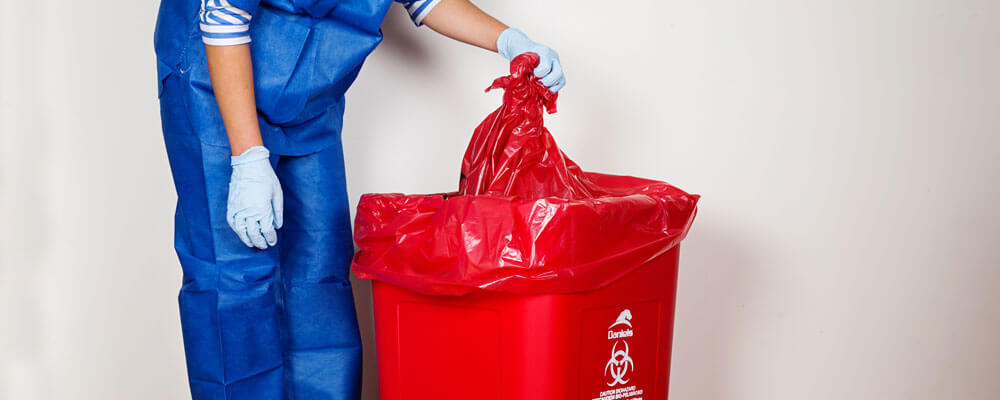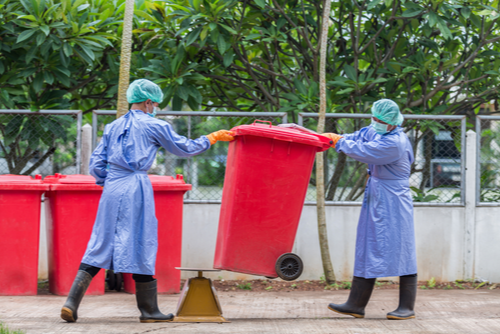Protecting Wellness: Unveiling the Essence of Expert Medical Waste Removal
Protecting Wellness: Unveiling the Essence of Expert Medical Waste Removal
Blog Article
Remain Ahead of Regulations: Specialist Advice on Medical Waste Disposal
In a globe where the medical care market is frequently advancing, it is important for clinical centers to stay ahead of policies when it involves the appropriate disposal of medical waste. With stringent standards and frequent regulative changes, it can be testing to navigate the intricacies of this procedure. With experienced advice, facilities can make certain compliance and minimize dangers associated with improper waste disposal. From understanding the different groups of medical waste to carrying out the ideal collection and partition techniques, this discussion will certainly give actionable suggestions and beneficial understandings to help facilities remain in advance of regulations in the ever-changing landscape of clinical garbage disposal.
Recognizing Clinical Waste Categories
Comprehending medical waste classifications is crucial for proper disposal and administration in health care facilities. Medical waste refers to any waste generated by healthcare tasks that may position a danger to public wellness or the setting. It is essential to classify medical waste accurately to ensure its secure handling, transportation, disposal, and treatment.
There are a number of categories of clinical waste that medical care centers need to be knowledgeable about. One of the most typical categories consist of transmittable waste, pathological waste, sharps waste, pharmaceutical waste, and chemical waste. Each group has details standards and guidelines for its correct monitoring and disposal.
Infectious waste includes materials contaminated with blood or various other physical liquids, such as gloves, dress, and research laboratory societies. Pathological waste describes human tissues, body organs, or body parts that need unique handling and disposal. Sharps waste consists of made use of needles, syringes, and other sharp objects that can create injury and send infections. Pharmaceutical waste makes up run out, unused, or contaminated medications that need mindful handling and disposal. Last but not least, chemical waste includes solvents, anti-bacterials, and various other chemical materials made use of in healthcare centers.
Staying Up-To-Date With Regulatory Changes
Staying current with governing modifications is vital for healthcare centers to make certain compliance and appropriate monitoring of medical waste disposal. medical waste removal services. With policies constantly advancing, it is vital for health care centers to remain updated to prevent charges, fines, and possible damage to the environment and public wellness
To remain in advance of regulative changes, medical care facilities should develop a system for surveillance and monitoring updates. This can be done by subscribing to governing newsletters, attending workshops and seminars, and actively taking part in market associations. Furthermore, facilities must designate a team member or group in charge of remaining educated and distributing details to appropriate stakeholders.
Normal communication with governing firms is likewise vital. Health care centers ought to develop relationships with regional, state, and government agencies to guarantee they know any type of changes in guidelines that may affect their waste monitoring practices. This can be done with routine meetings, engagement in public comment durations, and positive involvement with regulatory firms.
Moreover, health care centers should think about partnering with waste monitoring business that focus on clinical garbage disposal (medical waste disposal services with WasteX). These companies are commonly well-versed in the newest policies and can supply advice and assistance to make certain compliance
Executing Correct Collection and Partition Approaches
To effectively manage medical waste disposal, health care centers have to develop correct collection and partition approaches based on regulatory guidelines. Executing these methods guarantees the risk-free handling and disposal of possibly dangerous products, shields the environment, and reduces the danger of injuries and infections to medical care employees and the basic public.
Appropriate collection and segregation techniques involve using designated containers and labeling systems. Healthcare centers must provide clearly labeled containers for various kinds of medical waste, such as sharps, infectious waste, pharmaceutical waste, and non-hazardous waste. These containers need to be color-coded and plainly significant to prevent complication and advertise very easy recognition.
In addition, medical care facilities ought to train their team on the appropriate procedures for accumulating and segregating medical waste. This consists of educating them on the different sorts of waste, the proper containers to use, and the relevance of adhering to standards and guidelines. Routine training sessions and correspondence course must be conducted to make certain that staff participants stay up-to-date on finest practices.
In addition, medical care centers should develop a system for regular collection and disposal of clinical waste. This might include partnering with licensed waste management business that specialize in clinical garbage disposal. These companies will certainly ensure that the accumulated waste is moved and thrown away in compliance with regulative requirements.
Selecting the Right Disposal Approaches

Incineration is among the most typical and efficient methods for taking care go to this website of certain kinds of medical waste, such as pathological waste and sharps. It includes the controlled combustion of waste at heats, minimizing it to ash. Nonetheless, incineration can launch dangerous pollutants right into the air and contribute to air pollution.

Chemical therapy entails the usage of chemicals to reduce the effects of the waste and sanitize. Microwave treatment uses microwave power to heat and disinfect the waste.
Making Sure Conformity With Paperwork and Training
After thoroughly considering the suitable disposal techniques for clinical waste, medical care centers need to make sure conformity with guidelines and reduce environmental impact by carrying out efficient paperwork and training procedures. This step is vital in keeping a sustainable and safe environment for both medical care employees and the public.

Medical care workers that take care of clinical waste should obtain suitable training on waste segregation, handling, and disposal procedures. By offering extensive training, health care facilities can empower their staff to make informed decisions and minimize the risk of improper waste disposal.
Verdict
In verdict, remaining in advance of guidelines in medical waste disposal is vital for health care facilities. medical waste removal service. Understanding the various categories of medical waste, remaining upgraded with regulative changes, implementing correct collection and partition techniques, choosing the appropriate disposal approaches, and making certain compliance through documents and training are all necessary steps. By following these standards, health care organizations can properly get rid of and manage of clinical waste in a liable and risk-free fashion
From comprehending the different classifications of clinical waste to executing the appropriate collection and segregation approaches, this conversation will certainly supply actionable tips and useful insights to assist centers stay in advance of policies in the ever-changing landscape of clinical waste disposal. - medical waste disposal services with WasteX
The most common classifications company website include infectious waste, pathological waste, sharps waste, pharmaceutical waste, and chemical waste. Health care facilities must give plainly labeled containers for different kinds of medical waste, such as sharps, infectious waste, pharmaceutical waste, and non-hazardous waste. Healthcare facilities must develop a comprehensive system to tape-record and track all aspects of medical our website waste disposal, including types of waste generated, quantities, and disposal methods utilized. Health care workers that take care of clinical waste needs to obtain ideal training on waste partition, taking care of, and disposal treatments.
Report this page